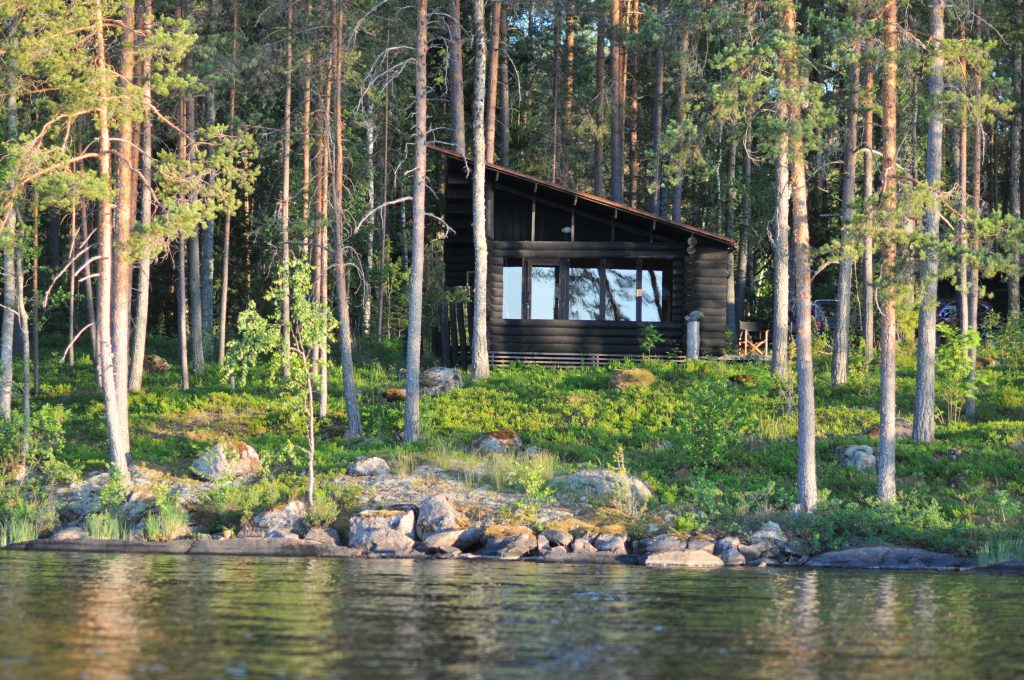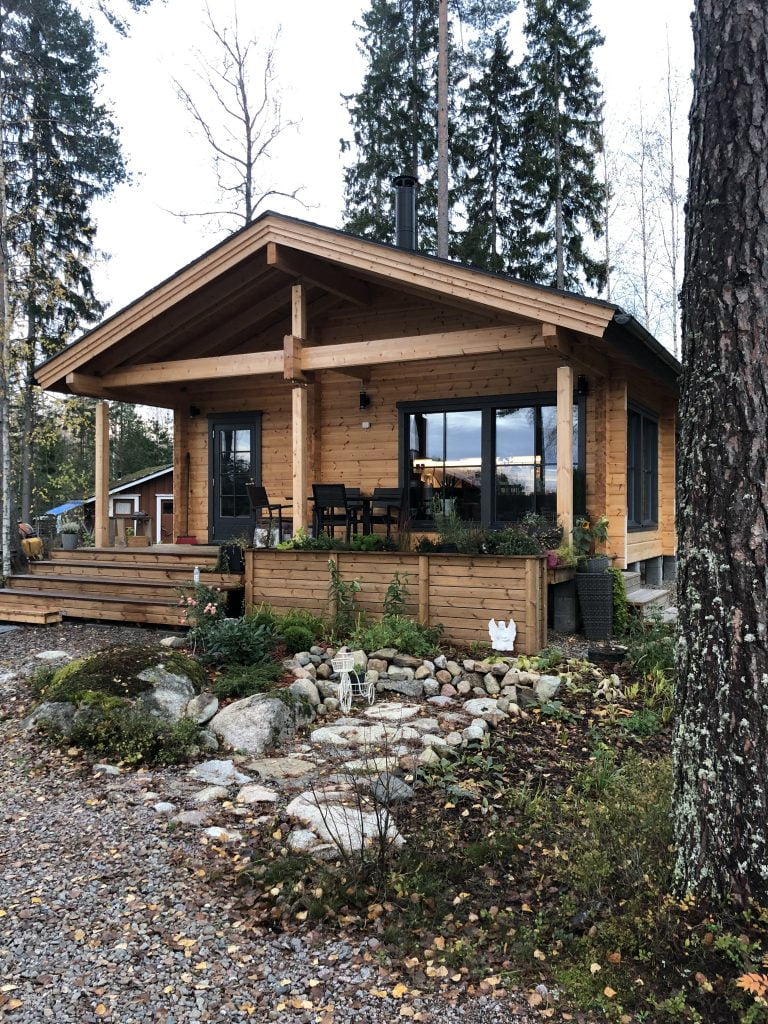Evolving tastes challenge the traditional summer cottage
In a country with hundreds of thousands of summer cottages, heading off to the countryside is an important part of Finnish culture. In recent years, it has actually gained popularity in some communities. While the public still retains a strong mental image of a simple, pitched-roofed summer house on the waterfront, such traditional cottages no longer meet everyone’s expectations and demands. The question is: how can our existing stock of cottages adapt to the changing times and the needs of new generations?
Text: Lotta Häkkänen
Photographs: Lotta Häkkänen, Juhani Häkkänen, Jussi Tiainen
Read the article in Finnish: Muuttuva mökkeily haastaa nykyistä mökkikantaa

The peak years for building cottages were in the 1980s, and their construction has clearly declined since then. However, cottage culture still remains a vital part of Finnish life and identity. In this promised land of summer cottages, thousands are still built every year. As people’s expectations of cottage life have evolved, the buildings have grown in size and become better equipped.
This article is based on the author’s master’s thesis in architecture, entitled “Modern-Day Villa – The Evolution Of The Finnish Cottage”. To write her master’s thesis, the author interviewed people working in various cottage-related sectors, including real estate agents, cottage manufacturers, and municipal zoning and building inspection authorities in popular holiday home areas. Their answers provided additional insight into current trends among cottage-goers and their wishes.
The many faces of summer cottages

In the childhood memories of many Finns, cottages are modest wooden buildings close to forests and lakes, far away from the city and its everyday life. For many people, the building interior is secondary to the atmosphere created by the surrounding landscape, auxiliary buildings and shoreline – the Finnish summer with its outdoor-friendly weather is short, after all. However, a cottage may also be a lavish log villa with all the amenities – and everything in between. The term cottage covers a wide range of different buildings, so what exactly do we have here in Finland?
According to the literature review and statistics in the thesis, the typical summer cottage in Finland is a wooden building with two or three auxiliary buildings. The cottage is along a shoreline, and its owner is typically over 60 years old. Most new cottages built in recent years are prefabricated log cabins ordered from a manufacturer. These typically have slightly younger owners.
Cottages in Finland are mostly quite small: Statistics Finland reports that the average size was only 49 m² in 2020. Wood is still the first and foremost building material. Interlocking logs and bare wooden interiors are a timeless model for Finnish summer cottages, something that still retains its popularity among the evolving selection of prefabricated holiday homes.
More room and more modern amenities
Traditional summer cottages have now been joined by modern day villas, and people want to spend time at these second homes every season of the year. Short weekend visits and longer-term telecommuting make cottages a natural part of people’s everyday life. It is no wonder that an increasing percentage of new construction is now better equipped and suited for year-round use. When people stay in their cottages year round, the inside of the building begins to play a bigger role.
The modern day cottage is more spacious than its predecessors, with holiday homes built after 2010 now being an average of 72 m² according to Statistics Finland. The main reason for the increase is the growing interest in year-round second homes. People spend more time indoors in winter of course, and the necessary additional amenities also need room.
There is still an important distinction between holiday homes and permanent homes, but studies indicate that this difference is less and less based on equipment levels. Household appliances, showers and indoor toilets are increasingly popular in modern day cottages. The interviews for the thesis indicate that people also want a modern look, large windows, open spaces and decently-sized terraces.
In particular, potential buyers value effortless use, ready-made solutions and easy maintenance. Only a few are willing to take on laborious renovations. Modern cottage-goers can select from a growing list of ready-made cottage models. As modern, extensively equipped, and winterised holiday homes continue to gain popularity, the reputation of cottages as an environmentally friendly holiday option is getting slightly dented.

However, most Finnish cottages are still relatively small and modest. The number of cottages in Finland increased exponentially from the 1960s to the 1980s. Many of the cottages from this era are now back on the market, but they no longer meet the demands of potential new owners. As the average age of today’s cottage owners continues to rise, more and more people have to think about who inherits their cottage. Despite the generally increased interest and demand, younger generations may reject a family cottage that is in a remote location and has never been renovated.
Aging cottages may still have potential
The new uses and wishes place new demands on the designs and construction solutions for holiday homes. To preserve traditional cottages as part of the Finnish landscape, there is a particular need for simple and affordable solutions for adapting aging cottages to the needs of modern users. We can avoid a future of thousands of deserted cottages across the country by keeping existing buildings in use as much as possible.

Renovating these buildings would also support the environmental sustainability of cottage life, and increasing the occupancy rate in existing cottages could reduce the construction of new cottages and keep shorelines intact. Environmentally friendly cottage life is of interest to many. For example, log structures are typically selected in new cottage construction for environmental reasons. However, demolishing legacy log cottages and building swank new holiday homes in their place is by no means environmentally aware.
When it comes to finding a use for the already existing stock of buildings, it is to be hoped that people will also be interested in holiday homes that are not on a beach. The deserted single-family homes in the countryside and other plots away from lakesides and the seashore may have an increased appeal when beach plots within a reasonable distance from the cities run out. Sites at a competitive price, a good location close to activities and services, and with modern amenities and realistic renovation opportunities can fulfil the dreams of many of today’s cottage-goers if they are willing to compromise on having a beach.
It should also be noted that not everyone wants to give up the voluntary asceticism offered by old-fashioned cottages, which is why there is still a demand for small, simple summer cabins. If modern holiday homes suggest a return to the villa era that kicked off the idea of holiday homes, could small and simple cottages off in the wilderness be the next big thing in the spirit of the boom of the 1960s and 1970s?
Having a modest cottage amidst untouched nature is a real luxury for many in today’s world. In addition, the idea of staying in a cabin without impacting the environment may fascinate more and more people in future. A simple summer cottage is also easier and cheaper to maintain than a statelier second home. Nowadays, people prefer to split their free time between several different places, and an old legacy cottage can be more than enough in the summer if the same family rents a cabin at a ski resort in the winter, for instance.
In a country with more than half a million cottages, current architectural discussions could and should veer more towards the future developments of cottage construction and the opportunities offered by old cottages. Examples of potentially important themes include renovating old cottages and improving their environmental efficiency, harnessing the potential of derelict cottages and unused buildings in the countryside, and finding solutions for expanding and developing cottages for multi-generational use. In the best case, family cottages, rich in memories and history, are passed down to future generations.
CREDITS
The author of this article, Lotta Häkkänen, graduated as an architect from Tampere University in 2020. She currently works as architect at Arkkitehtitoimisto Lehto Pelkonen Valkama Oy.

